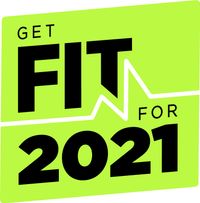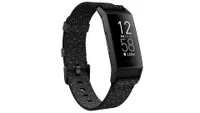Sitting can kill you: Exercise THIS much if you work at a desk all day, research says
Office workers, listen up! Prolonged sitting can be offset by doing the right amount of exercising each day


Even before the lockdown, prolonged sitting was a global issue, let alone ever since we started going outside less and working from home more. According to the NHS, sitting around too much can increase the risk of type 2 diabetes, some types of cancer, and even result in early death in some cases. One solution is to invest in one of the best sit-stand desks, so you can stand up for at least some of each working day. But it's also a good idea to adjust your exercise regime; the negative effects of sitting around can be offset by exercising the right amount every day.
A meta-study, published in the British Journal of Sports Medicine, looked at data gathered from over 44,000 middle aged adults, both men and women, to see what is the optimum (minimum) amount of exercising that provides similar health benefits to those who exercise more frequently. All participants wore activity trackers to measure their activity levels: the best running watches and best Fitbits all have GPS, accelerometer and optical heart rate sensors that can track physical activities of individuals accurately.
- 5 WFH posture mistakes you're making, and how to fix them
- Best Fitbit deals
- Best Garmin watch deals

The participants' sedentary-level ranged from 8.5 hours/day to 10.5 hours/day, which can be considered average for someone who has a desk-based job. The research examined the correlation between the amount of 'moderate-to-vigorous intensity physical activity' – or MVPA for short – done by participants and their mortality rates.
What is moderate to vigorous exercising ? Going for a brisk walking session counts as moderate exercising while doing a HIIT class is a high-intensity activity. Now, if you are over 40, the benefits of performing high-intensity workout are offset by the potential damage this type of exercising can do to your body. Jumping around and doing sprints can erode joints and cause muscle pain if you are not eating well and resting enough.
• Best mood boosting exercises to beat Blue Monday
The good news is, you don't have to do HIIT to stay live. As the research paper states, "among those in the highest third of MVPA, the risk of death was not statistically different from the referent for those in the middle thirds of sedentary time", meaning that from a longevity point of view, you don't have to overdo exercising. The law of diminishing returns is clearly at play here.
- Best fitness tracker
- Basics of boxing with FightCamp co-founder Tommy Duquette
Fitbit Charge 4 | Now $119.95| Was $149.95 | Save $30 at Fitbit
The battery of the Fitbit Charge 4 will last for up to a week, and this capable fitness tracker has an optical heart rate sensor and a built-in GPS. You can also control music playback on the phone from your wrist and track sleep with the Charge 4. Get health insights in the Fitbit App.

The researchers concluded that "about 30–40 min of MVPA per day attenuate the association between sedentary time and risk of death, which is lower than previous estimates from self-reported data." Assuming that people spend their weekends in a more active fashion, the days where damage done by sitting around too much are weekdays weekdays.
Get all the latest news, reviews, deals and buying guides on gorgeous tech, home and active products from the T3 experts
This amounts to 150-200 minutes of MVPA a week which is exactly what the WHO recommends. If you are unsure when you're heart rate is 'in the zone', getting a Fitbit or a Garmin watch could help. These smartwatches not only monitor heart rate 24/7 but also track minutes that you spend in the correct heart rate zone, regardless if you are tracking them as workouts or not. Fitbit calls this feature 'Active Zone Minutes' while Garmin went with 'Intensity Minutes'.
Fitbit Sense | Was $329.95 | Now $279.95 | Save $50 at Fitbit
Who would've thought, seeing a Fitbit Sense deal this Black Friday, only a few months after it was released? Better still, thanks to the new Fitbit OS 5.1, the Sense is now capable of even more precise SpO2 measurements. Google Assistant is also finally available to use so you can choose between Amazon Alexa and that. In case one voice assistant option is just not enough for you.

This is part of T3's Fit for 2021 programme, which will be running throughout January. We aim to bring you tips on diet, lifestyle and exercise that will help you shape up for what is certain to be a difficult year. One thing we can guarantee: it WILL be better than last year. And hopefully we'll help you get the most out of it.

Matt Kollat is a journalist and content creator who works for T3.com and its magazine counterpart as an Active Editor. His areas of expertise include wearables, drones, fitness equipment, nutrition and outdoor gear. He joined T3 in 2019. His byline appears in several publications, including Techradar and Fit&Well, and more. Matt also collaborated with other content creators (e.g. Garage Gym Reviews) and judged many awards, such as the European Specialist Sports Nutrition Alliance's ESSNawards. When he isn't working out, running or cycling, you'll find him roaming the countryside and trying out new podcasting and content creation equipment.

